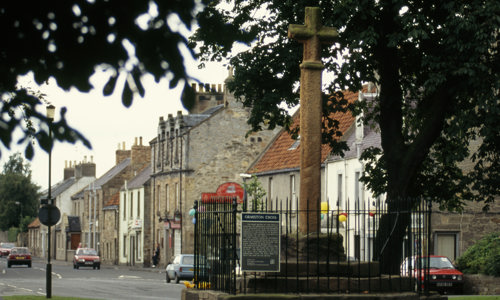History
Collegiate churches are so called because they housed a college, or community, of priests. The religious leaders would be brought together by the local landowner to pray for his and his family’s salvation. Seton is one of the finest medieval collegiate churches to survive in Scotland.
Seton’s story begins in the 1100s, when the site was chosen for a new church to serve the parish of Seton. In the 1400s, the church was increasingly used as the private place of worship and burial vault of local landowners, the Seton family.
The 1st Lord Seton set up the college of priests in 1470, and his son secured papal approval for full collegiate status in 1492. But the Protestant Reformation of 1560 effectively put paid to the church being used for masses for the souls of the Setons.
Seton remained the parish kirk for a while, but fell out of use after the parishes of Seton and Tranent merged in 1580. The kirk was ransacked and the Seton tombs broken into after the 1715 Jacobite Rising – the Setons had supported the exiled James Edward Stuart.
Later that century, the estate passed to the Earl of Wemyss, who restored what was left of the kirk to serve as his family’s burial place.
College of priests
The Setons – whose residence, Seton Castle, lay just to the west, on a site now occupied by Seton Palace – began the process of raising their parish church to collegiate status in the 1400s.
After the death of Lord John Seton in 1434, Lady Catherine added a small side-chapel to the south side of the church, to house her late husband’s tomb and a private altar. (The chapel no longer exists.)
In 1470, her grandson, George, 1st Lord Seton, founded the college of priests – though the Pope died before granting him permission to do so. Even so, George began building the splendid new choir that now dominates the site, and a small sacristy, where the priests prepared for the Mass.
His son finally gained the Pope’s blessing in 1492, and completed his father’s building programme. The church was dedicated to St Mary and the Holy Cross, and the college had a provost, six priests, a clerk and two choirboys. The foundations of their domestic quarters survive, to the north-west of the church.
War damage
During the Wars of the Rough Wooing in the 1540s, the English burned Seton’s timberwork and stole its bells and organ.
Lady Janet, widow of the 3rd Lord Seton, did her best to repair the damage, demolishing Lady Catherine’s chapel and building the present transepts and bell tower. But the Reformation of 1560 effectively brought an end to collegiate life.















